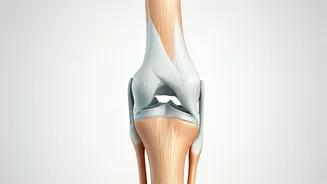Introduction: Understanding Shoulder Pain
Shoulder pain can stem from diverse factors, encompassing overuse, injuries, or underlying medical conditions. The shoulder's intricate structure, including
bones, muscles, tendons, and ligaments, renders it vulnerable to various issues. Many individuals encounter pain due to activities like lifting, sports, or even routine tasks. Before beginning any exercise regimen, it is crucial to consult a healthcare professional. They can diagnose the root cause of the shoulder discomfort and suggest the best course of action. This ensures the exercises are appropriate and safe for one’s specific needs, reducing the risk of further injury. Understanding the underlying cause is the initial and most vital step toward effective treatment and recovery.
Exercise 1: Pendulum Swings
Pendulum swings are a gentle exercise perfect for initiating shoulder mobility and relieving stiffness. To perform this exercise, stand with feet shoulder-width apart, and lean forward, supporting yourself with one hand on a table or chair. Allow the affected arm to hang down loosely. Gently swing the arm forward and backward, then side to side, and finally in small circles. The movements should be slow and controlled, focusing on range of motion without forcing the joint. Aim for about 10-15 repetitions in each direction, maintaining relaxation throughout the exercise. This helps loosen the shoulder joint and reduce discomfort. Pendulum swings enhance circulation, aiding in recovery and flexibility. Regular practice of these swings promotes improved shoulder function over time.
Exercise 2: Cross-Body Reach
The cross-body reach is a simple stretch that targets the shoulder and upper back. To perform this, gently bring your affected arm across your body, towards the opposite shoulder. Using your other hand, gently pull the affected arm closer to your chest, deepening the stretch. Hold this position for approximately 20-30 seconds, maintaining a comfortable level of tension. This exercise focuses on stretching the posterior shoulder muscles, which can often be tight and contribute to pain. The cross-body reach helps to improve shoulder flexibility and can reduce tightness. Repeat this stretch several times a day to maintain optimal range of motion. It is especially beneficial for individuals who spend considerable time sitting or performing repetitive arm movements.
Exercise 3: Wall Walks
Wall walks are a gradual exercise designed to improve shoulder range of motion and muscle strength. Stand facing a wall, and place your fingers on the wall at shoulder height. Slowly “walk” your fingers up the wall, aiming to reach as high as possible without causing pain. Once at your highest comfortable point, pause briefly, then slowly walk your fingers back down the wall. This exercise helps to strengthen the rotator cuff muscles and improve shoulder mobility. Performing wall walks regularly increases the shoulder's ability to move in different directions. Focus on maintaining a slow, controlled pace throughout the exercise to maximize its benefits and avoid any sudden movements. Doing 10-12 repetitions can significantly improve shoulder function.
Exercise 4: Shoulder Blade Squeezes
Shoulder blade squeezes are an exercise that targets posture and strengthens the muscles between the shoulder blades. To do this, sit or stand tall, keeping your shoulders relaxed. Gently squeeze your shoulder blades together, as if trying to pinch something between them. Hold this position for 5-10 seconds, then release. Focus on maintaining good posture throughout the exercise. These squeezes counteract the effects of slouching and improve upper back strength. Performing this exercise regularly helps to alleviate pain and improve shoulder stability. Practicing shoulder blade squeezes several times a day can help correct posture and provide relief from shoulder discomfort. Maintaining a neutral spine during the exercise is essential to maximize its effectiveness and avoid strain.














